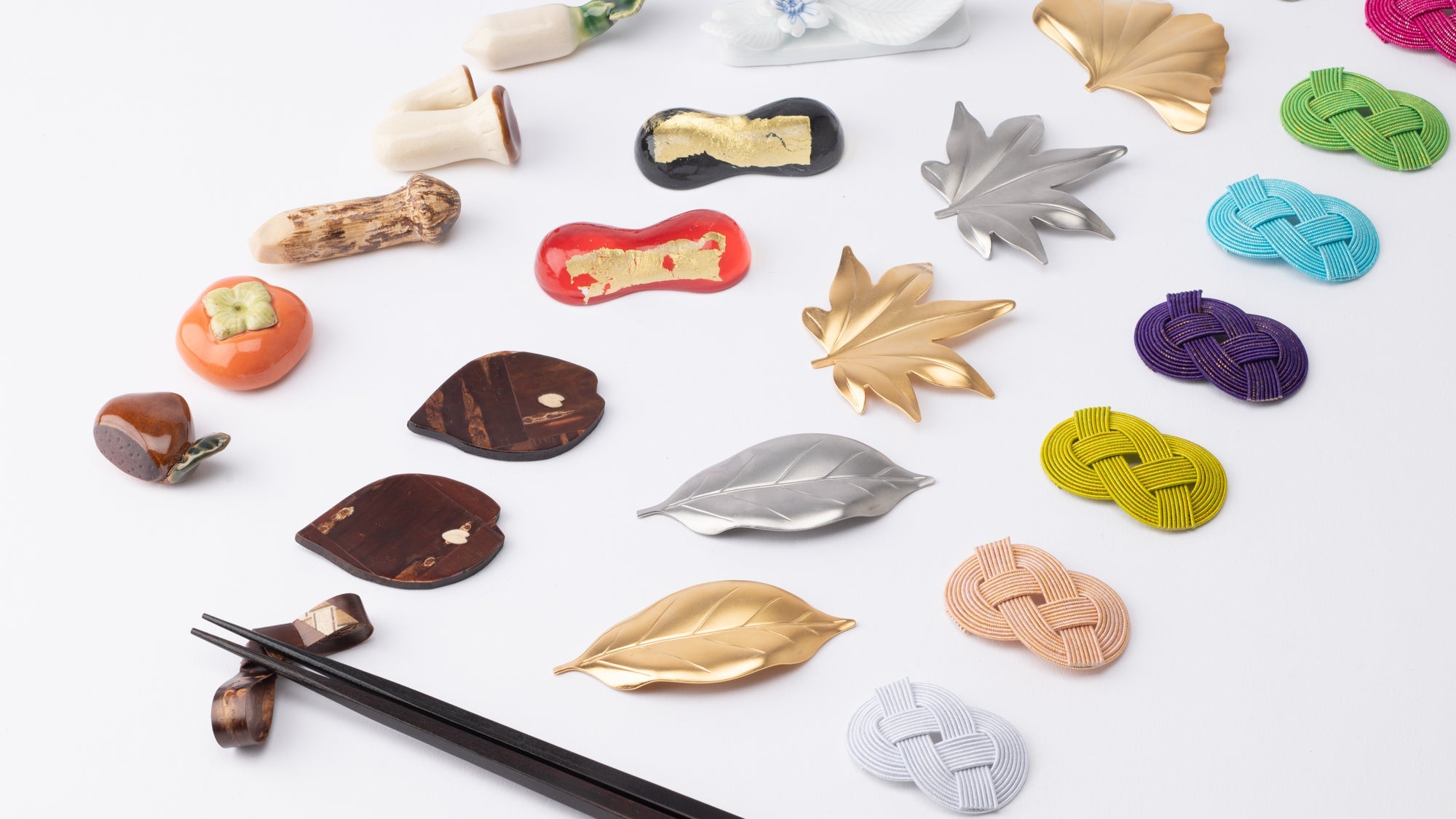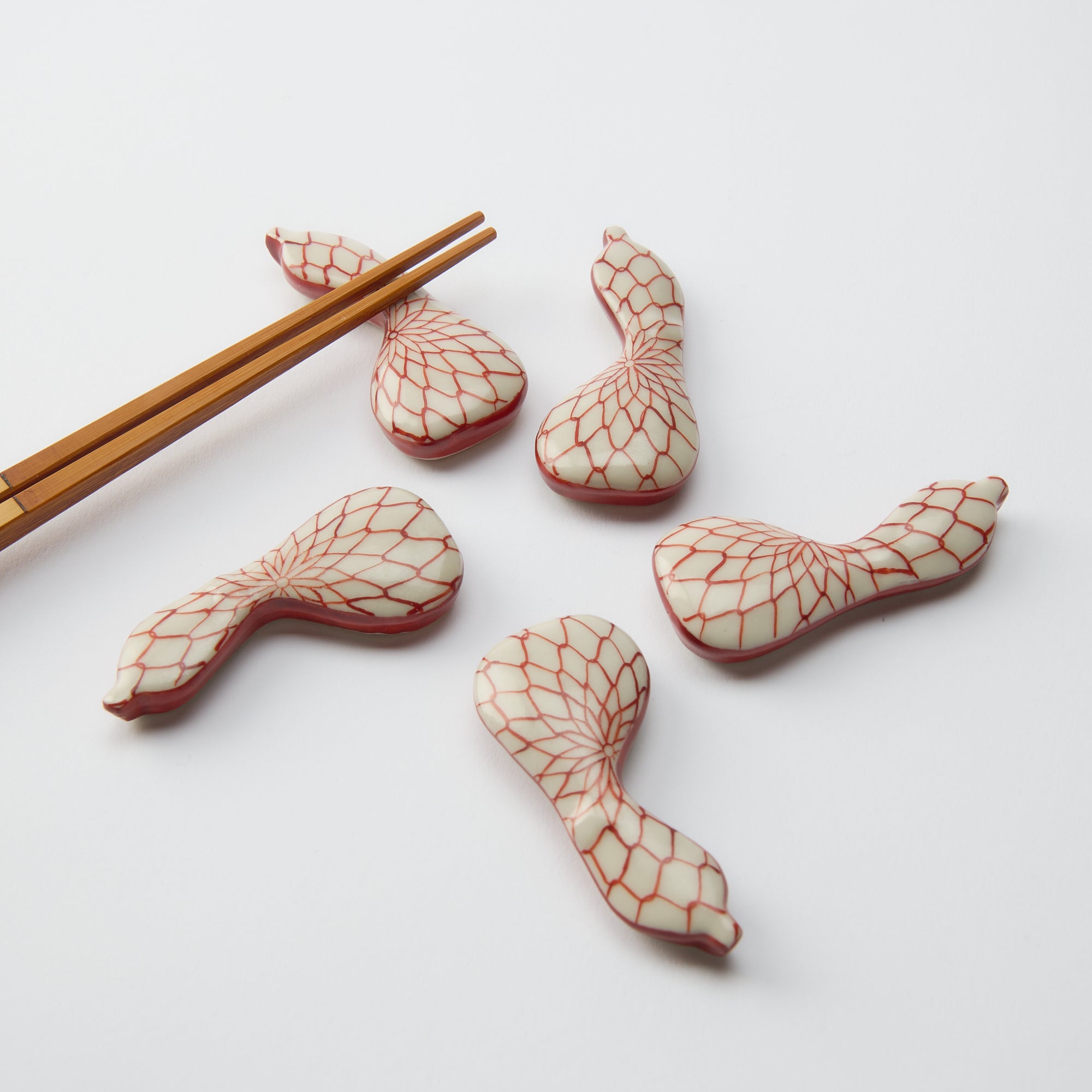
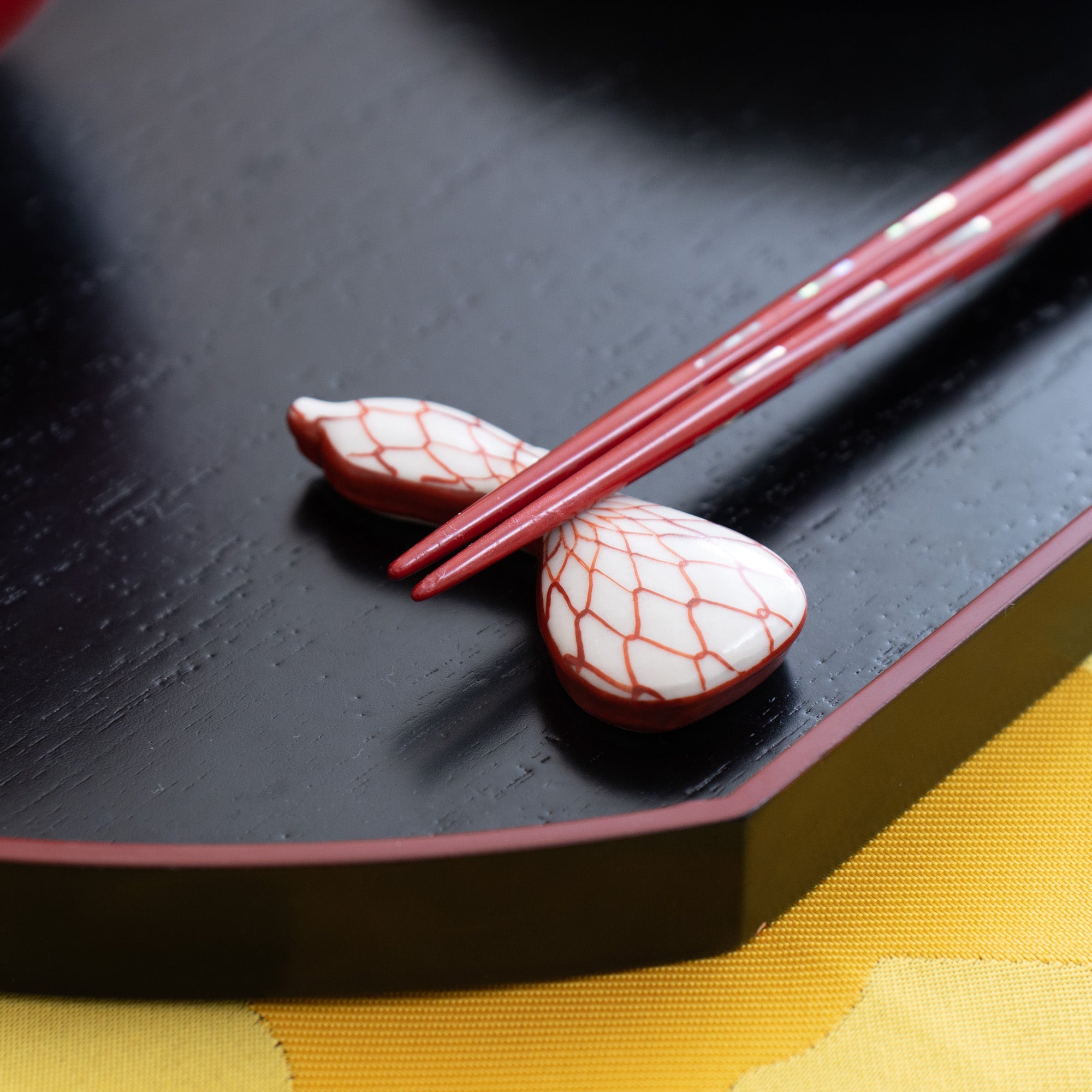
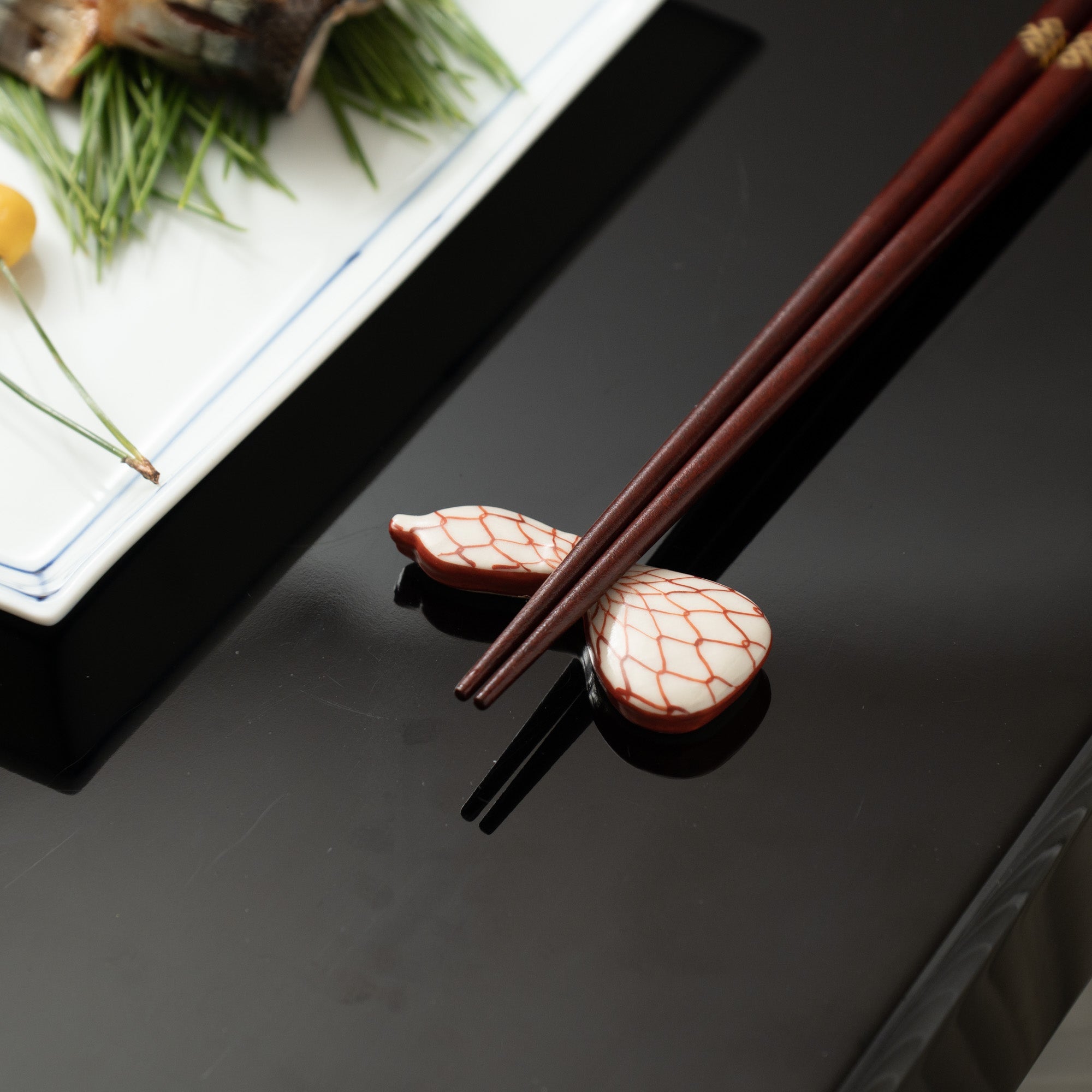
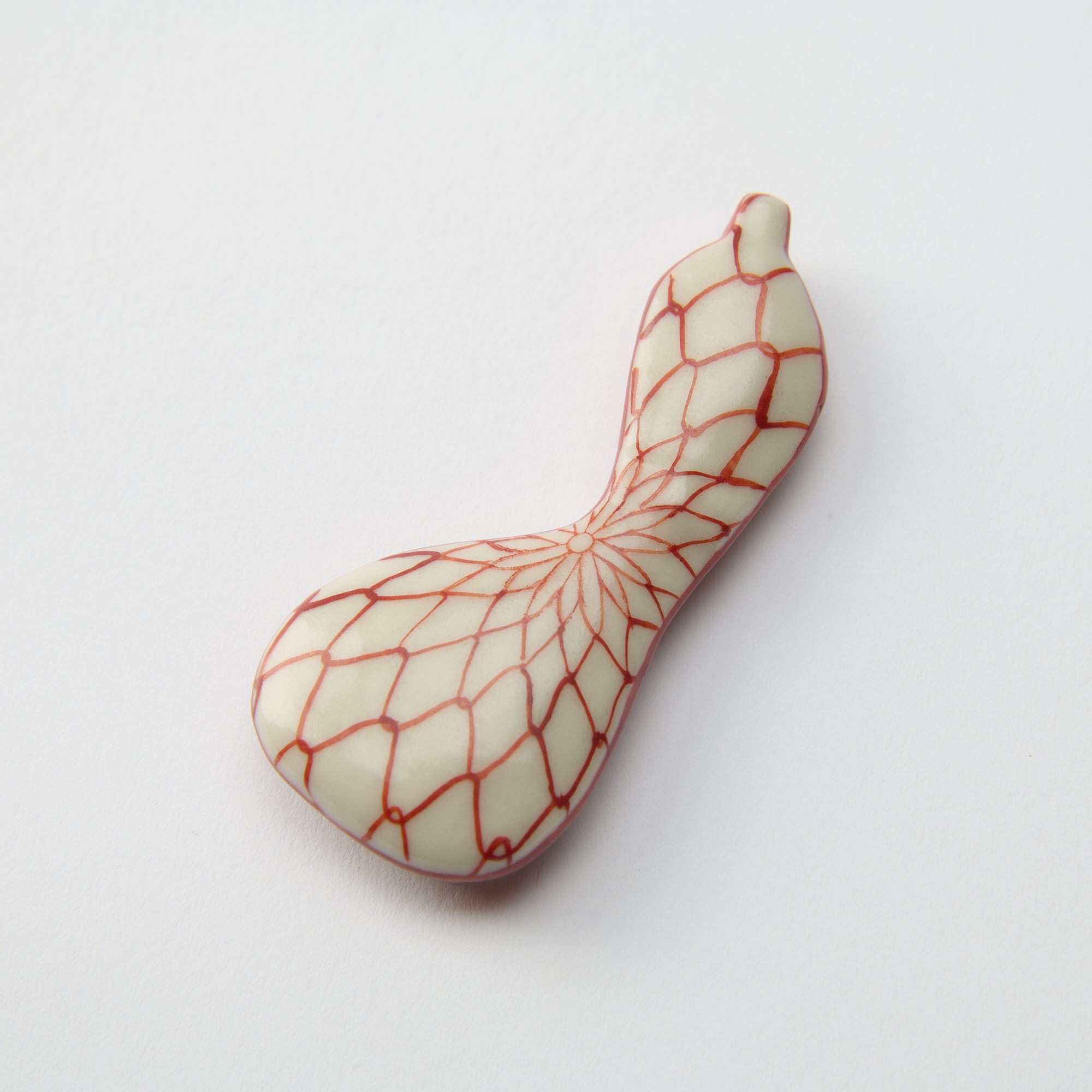
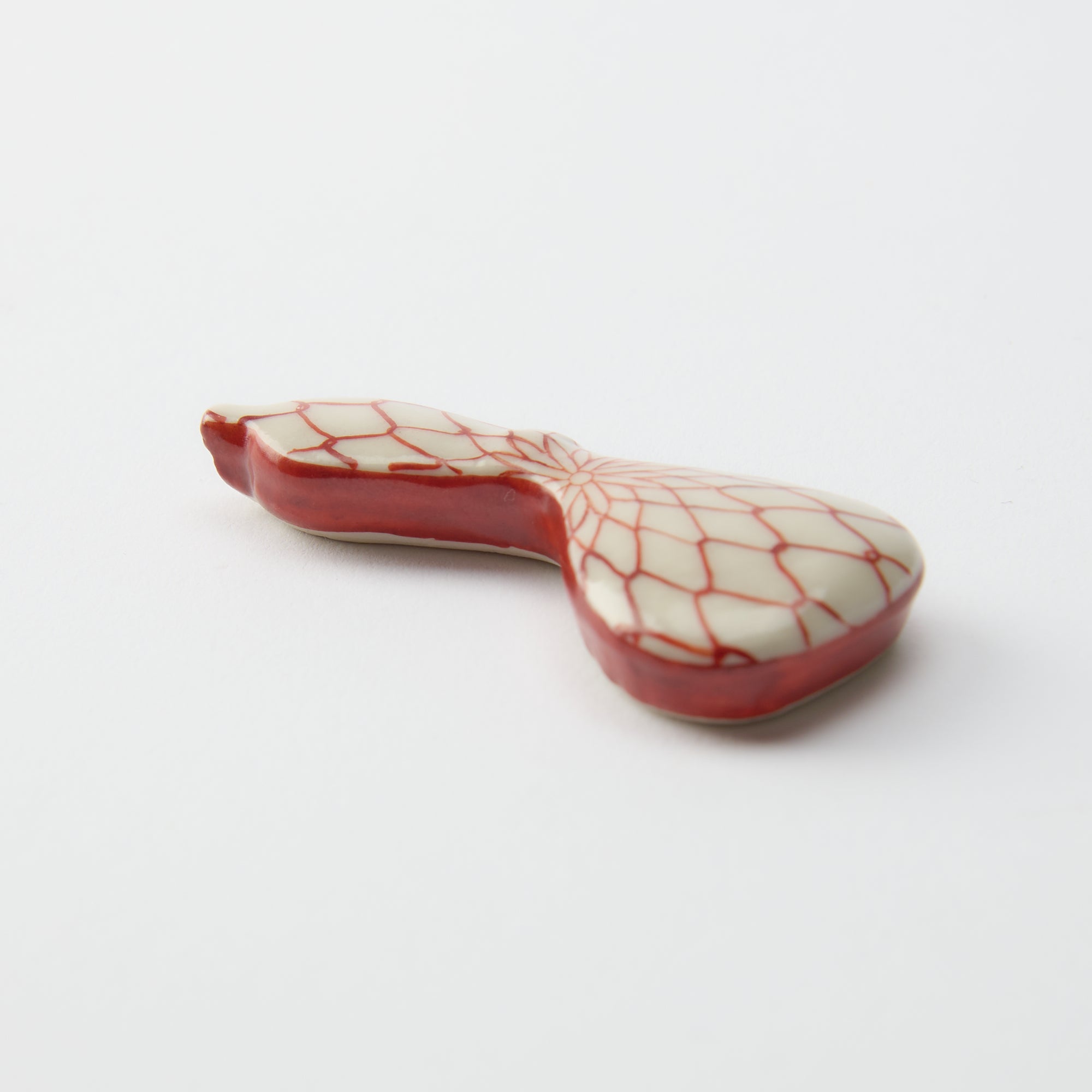
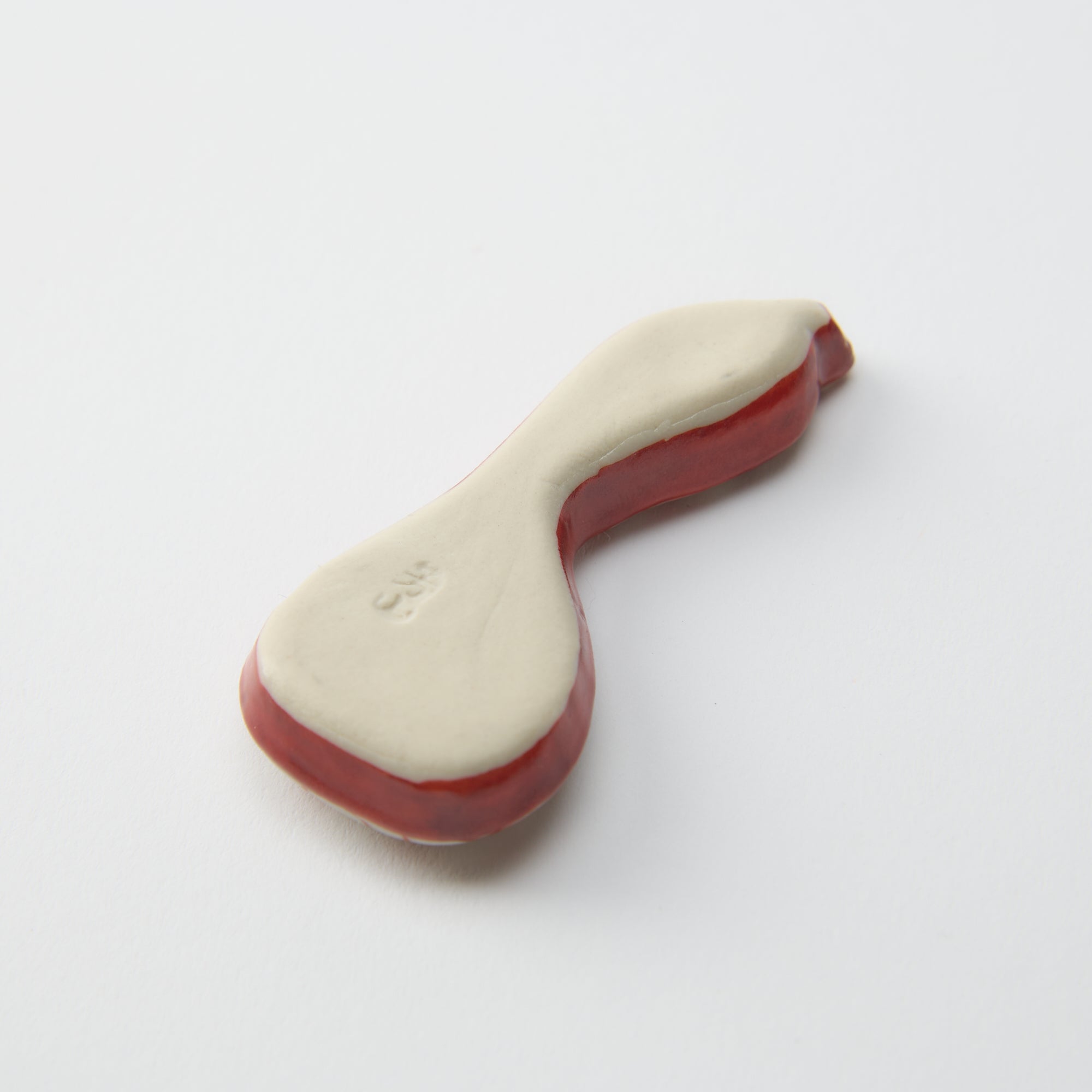
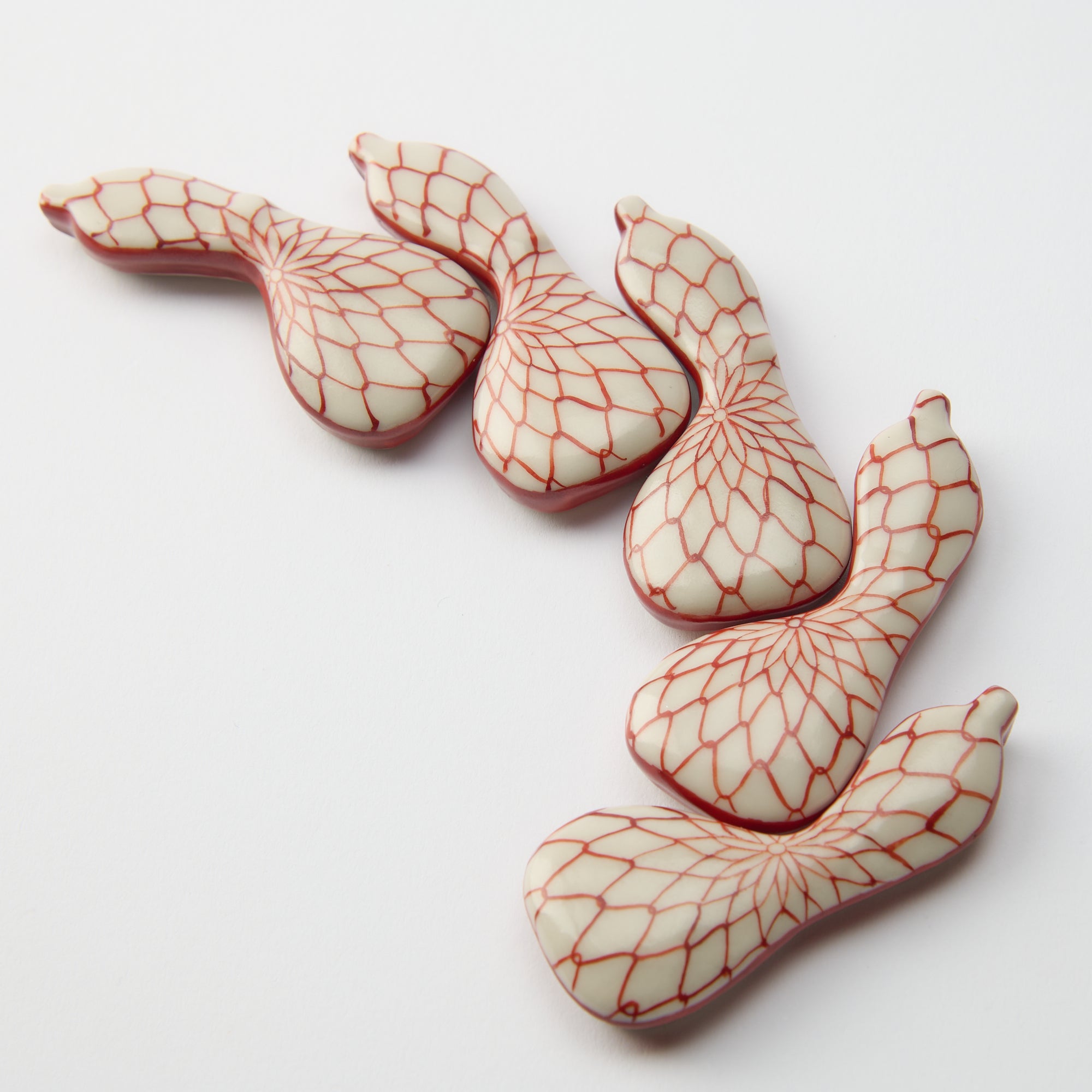
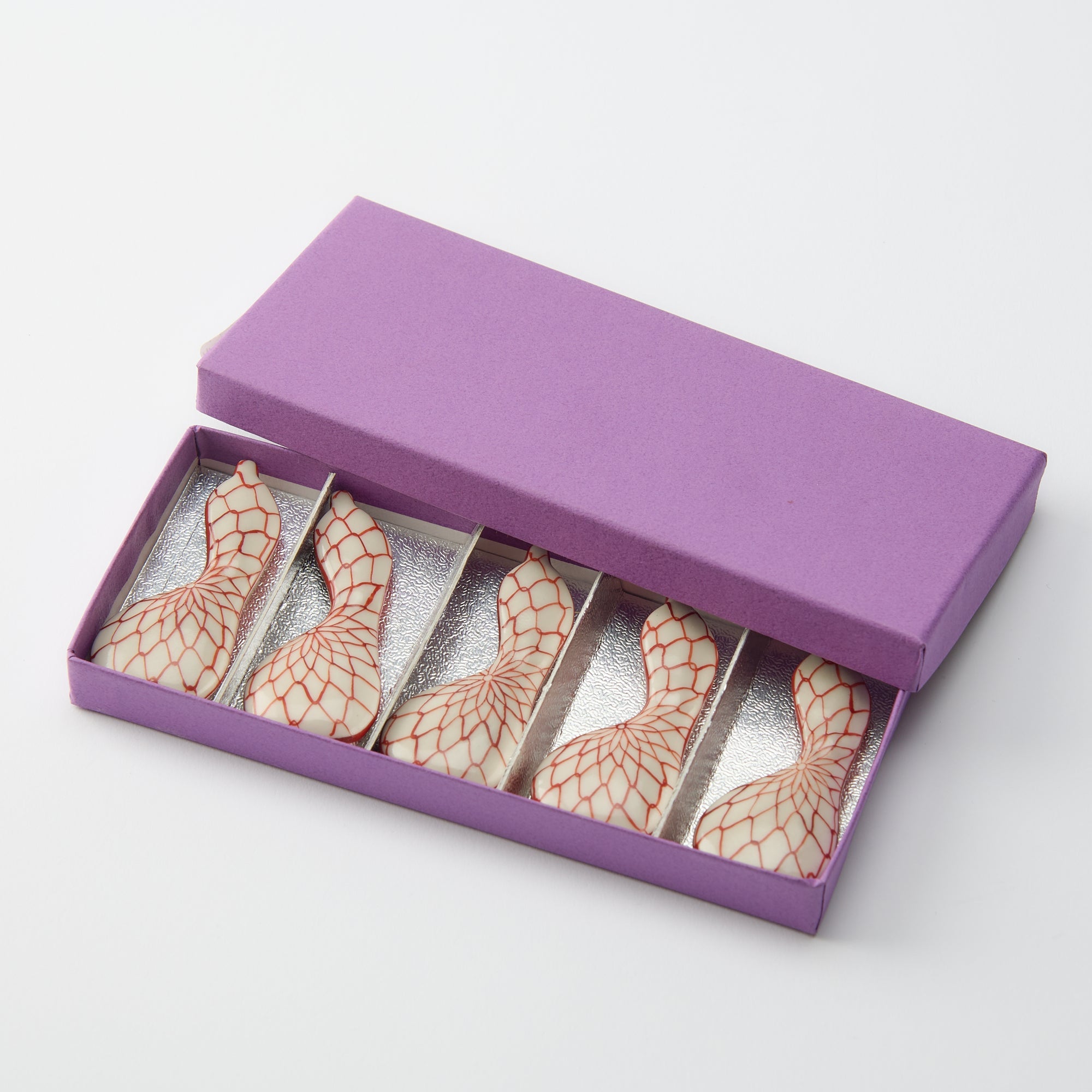
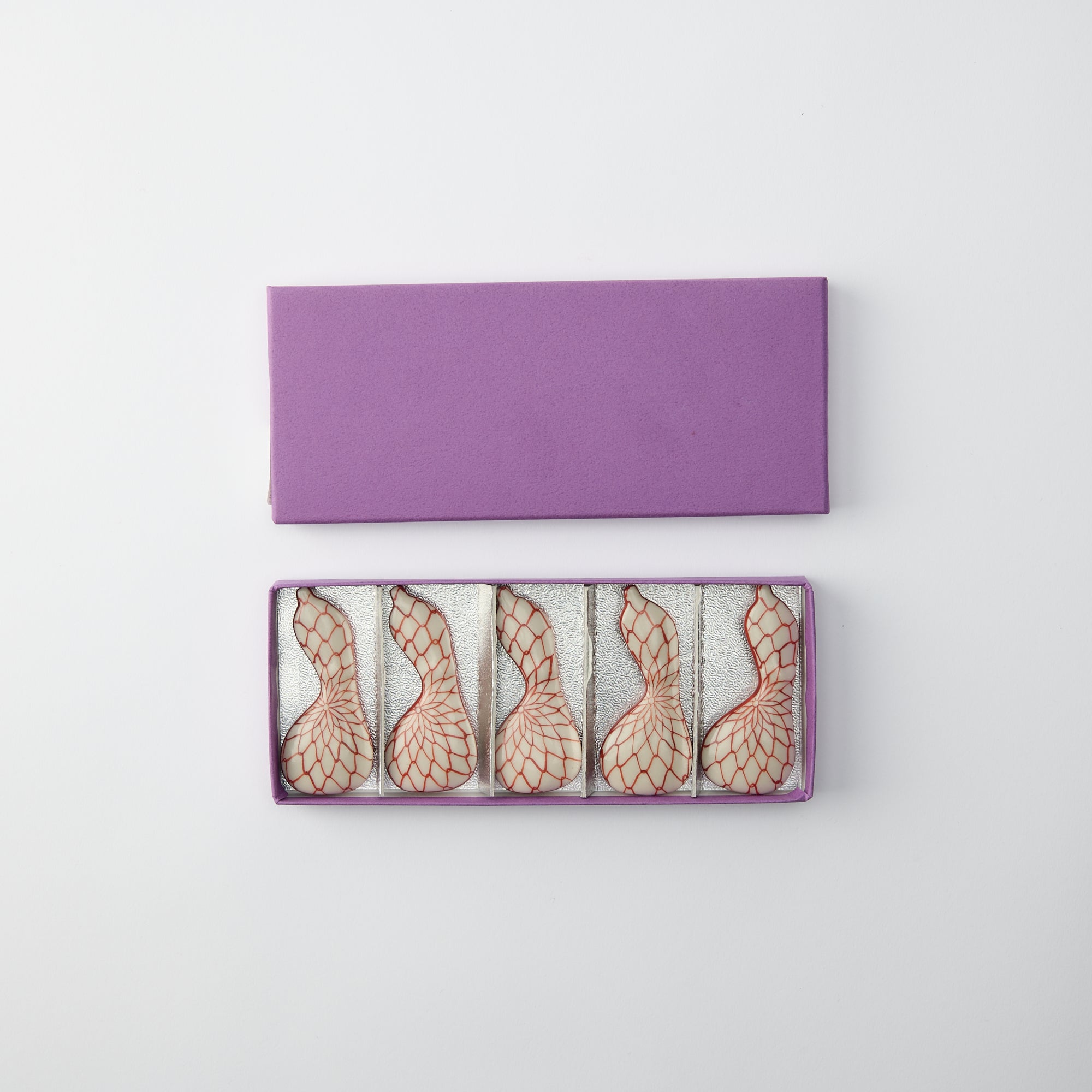
Rot- Netzkürbis-Essstäbchenablage Satz
Estimated Shipping Widget will be displayed here!
Dies ist ein einzigartiges kürbisförmiges Essstäbchen-Set von Hozan Kiln aus Kyo-Ware. Die Kürbisform, die sich nach unten hin ausbreitet, gilt in Japan seit der Antike als Glücksbringer, der Unglück abwehrt und Glück bringt. Darüber hinaus ist das Netzmuster ein häufig verwendetes Motiv auf japanischem Geschirr und symbolisiert einen guten Fang oder vollen Erfolg beim Angeln. Es suggeriert Glück und ist daher ein Muster mit glückverheißender Konnotation.
Mit ihrer glatten und nahtlosen Oberfläche sind diese Essstäbchenablagen aus Keramik eine unverzichtbare Ergänzung für Ihr tägliches Esserlebnis. Sie sind mühelos zu pflegen und bleiben in makellosem Zustand, was für dauerhafte Eleganz und Hygiene sorgt. Sie fügen sich harmonisch in eine große Auswahl an Geschirr ein und verleihen jedem Esstisch einen Hauch von Raffinesse.
Diese Essstäbchenablagen sind in einer schönen violetten Papierschachtel verpackt und somit eine hervorragende Wahl, egal ob Sie sich selbst eine Freude machen oder ein exquisites Geschenk für einen besonderen Anlass auswählen. Sie bereiten jedem Empfänger garantiert Freude.
EINZELHEITEN
| Quantity | 5 pcs |
| Size | L 6.5 cm (2.5 in) x W 2.5 cm (1 in) x H 1 cm (0.4 in) |
| Material | Stoneware |
| Package Type | Paper box |
| Microwave | No |
| Dishwasher | No |
Hersteller / Marke
Der Hozan-Ofen in Kyoto konzentriert sich hauptsächlich auf Unterglasur-Emaillierungstechniken, insbesondere gosu, und ist spezialisiert auf die Herstellung von netzbemaltem Geschirr und zart bemalten Essstäbchenablagen, die mit saisonalen Motiven verziert sind.
Die Geschichte von Hozan Kiln reicht bis ins Jahr 1951 zurück, als das Unternehmen als Kato Yukichi Seisakusho (Kato Yukichi Fabrik) gegründet wurde. Später wurde der Name in Hozan Kiln geändert. Der derzeitige Eigentümer, Kato Yoshitsugu, vertritt die dritte Generation.
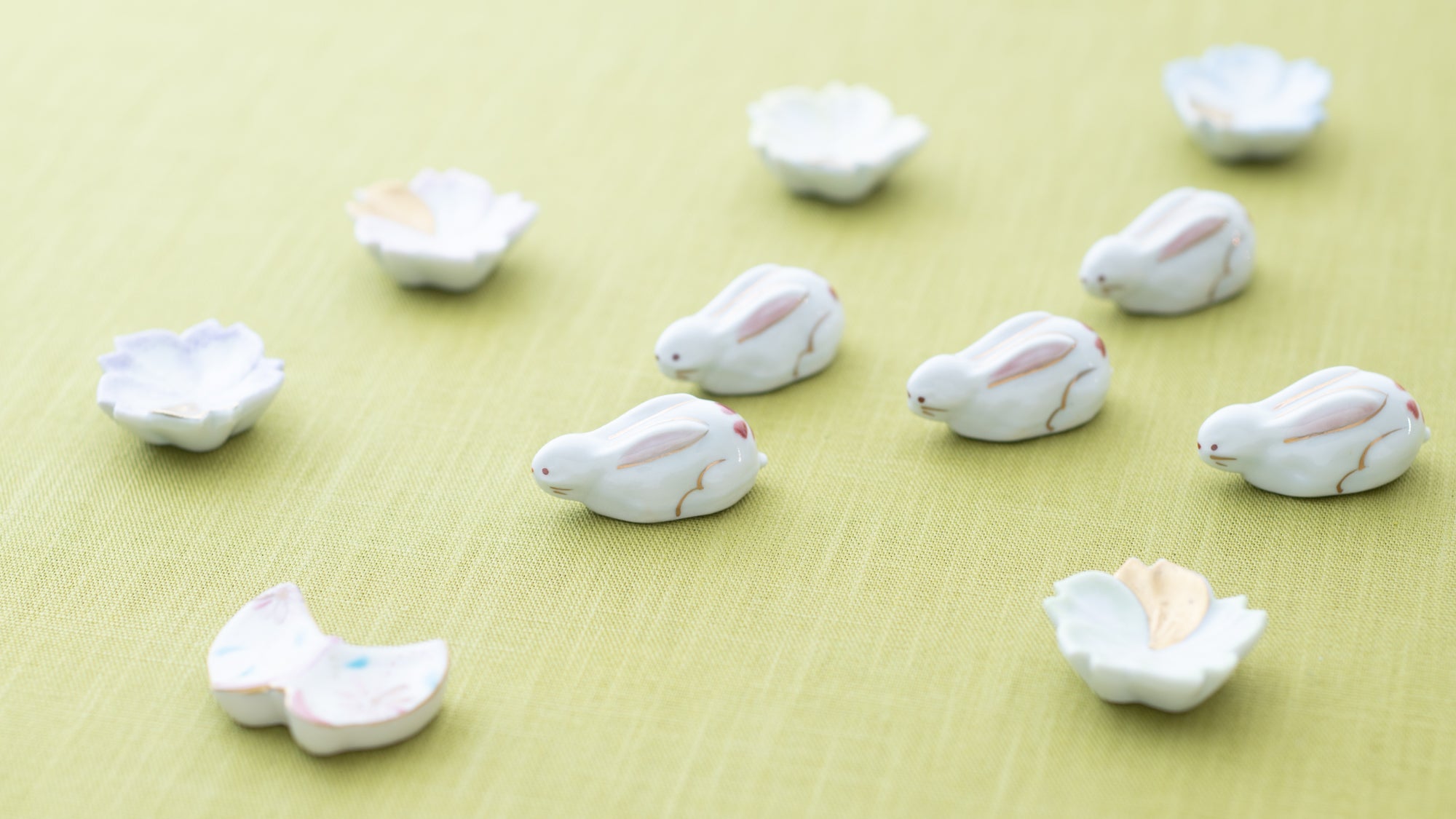
Kunsthandwerk
Kyo- und Kiyomizu-Ware, zusammen als Kyo-yaki und Kiyomizu-yaki bekannt, sind berühmte Keramikstile aus Kyoto. Bekannt für ihr lebendiges Design, ihre fein geformten Formen und die Liebe zum handwerklichen Detail, spiegeln diese Waren Kyotos unverwechselbaren Sinn für Schönheit und künstlerische Raffinesse wider.
Kyo- und Kiyomizu-Ware zeichnen sich durch eine lange gepflegte Vielfalt aus und greifen auf Techniken und Stile der Töpfertraditionen Japans zurück. So entwickelte sich eine ausdrucksstarke und typisch Kyoto-Kunstform. 1977 als traditionelles japanisches Kunsthandwerk anerkannt, werden sie bis heute wegen ihrer kulturellen Tiefe und Alltagstauglichkeit geschätzt.

Optionen auswählen









Estimated Shipping Widget will be displayed here!
Essstäbchenablagen
Essstäbchenhalter verleihen Ihrem Tisch einen Hauch japanischen Stils. Eine Mischung aus Alltagsgegenständen und besonderen Anlässen macht Ihren Tisch für jeden Anlass bereit. Wir haben handgefertigte Essstäbchenhalter aus ganz Japan ausgewählt, um Ihr kulinarisches Erlebnis noch angenehmer zu gestalten. Von verspielten Porzellanformen bis hin zu eleganten Metalldesigns verleihen diese kleinen Akzente jedem Ambiente einen besonderen Charme.
